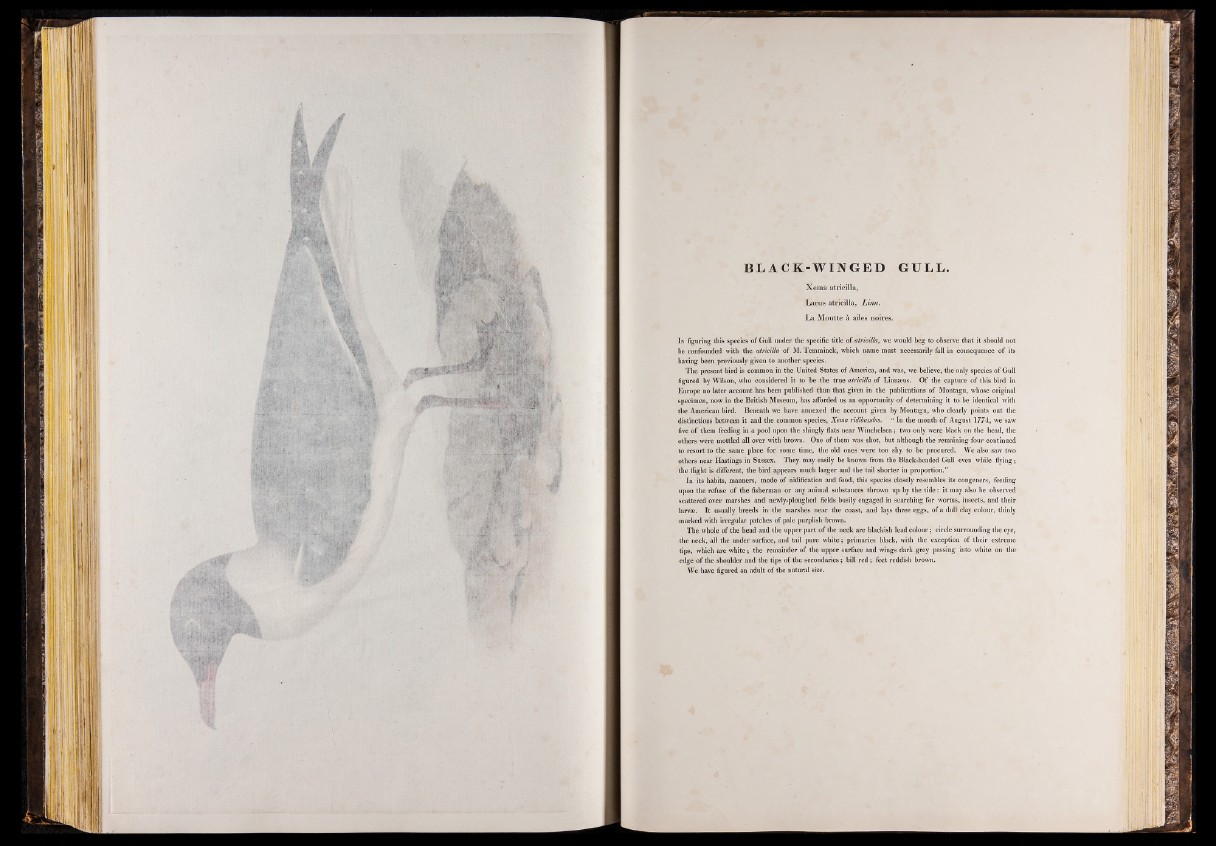
B L A C K -WIN G E D GULL.
X em a atriciila,
L a ru s atriciila, Linn.
L a M o u tte a ailes noires.
In figuring this species of Gull under the specific title of atriciila, we would beg to observe that it should not
be confounded with the atriciila of M. Temminck, which name must necessarily fall in consequence of its
having been previously given to another species.
The present bird is common in the United States of America, and was, we believe, the only species of Gull
figured by Wilson, who considered it to be the true atriciila of Linnasus. Of the capture of this bird in
Europe no later account has been published than that given in the publications of Montagu, whose original
specimen, now in the British Museum, has afforded us an opportunity of determining it to be identical with
the American bird. Beneath we have annexed the account given by Montagu, who clearly points out the
distinctions between it and the common species, Xema ridibundus. “ In the month of August 1774, we saw
five of them feeding in a pool upon the shingly flats near Winchelsea; two only were black on the head, the
others were mottled all over with brown. One of them was shot, but although the remaining four continued
to resort to the same place for some time, the old ones were too shy to be procured. We also saw two
others near Hastings in Sussex. They may easily be known from the Black-headed Gull even while flying;
the flight is different, the bird appears much larger and the tail shorter in proportion.”
In its habits, manners, mode of nidification and food, this species closely resembles its congeners, feeding
upon the refuse of the fisherman or any animal substances thrown up by the tide: it may also be observed
scattered over marshes and newly-ploughed fields busily engaged in searching for worms, insects, and their
lame. It usually breeds in the marshes near the coast, and lays three eggs, of a dull clay colour, thinly
marked with irregular patches of pale purplish brown.
The whole of the head and the upper part of the neck are blackish lead colour; circle surrounding the eye,
the neck, all the under surface, and tail pure white; primaries black, with the exception of their extreme
tips, which are white; the remainder of the upper surface and wings dark grey passing into white on the
edge of the shoulder and the tips of the secondaries; bill red; feet reddish brown.
We have figured an adult of the natural size.